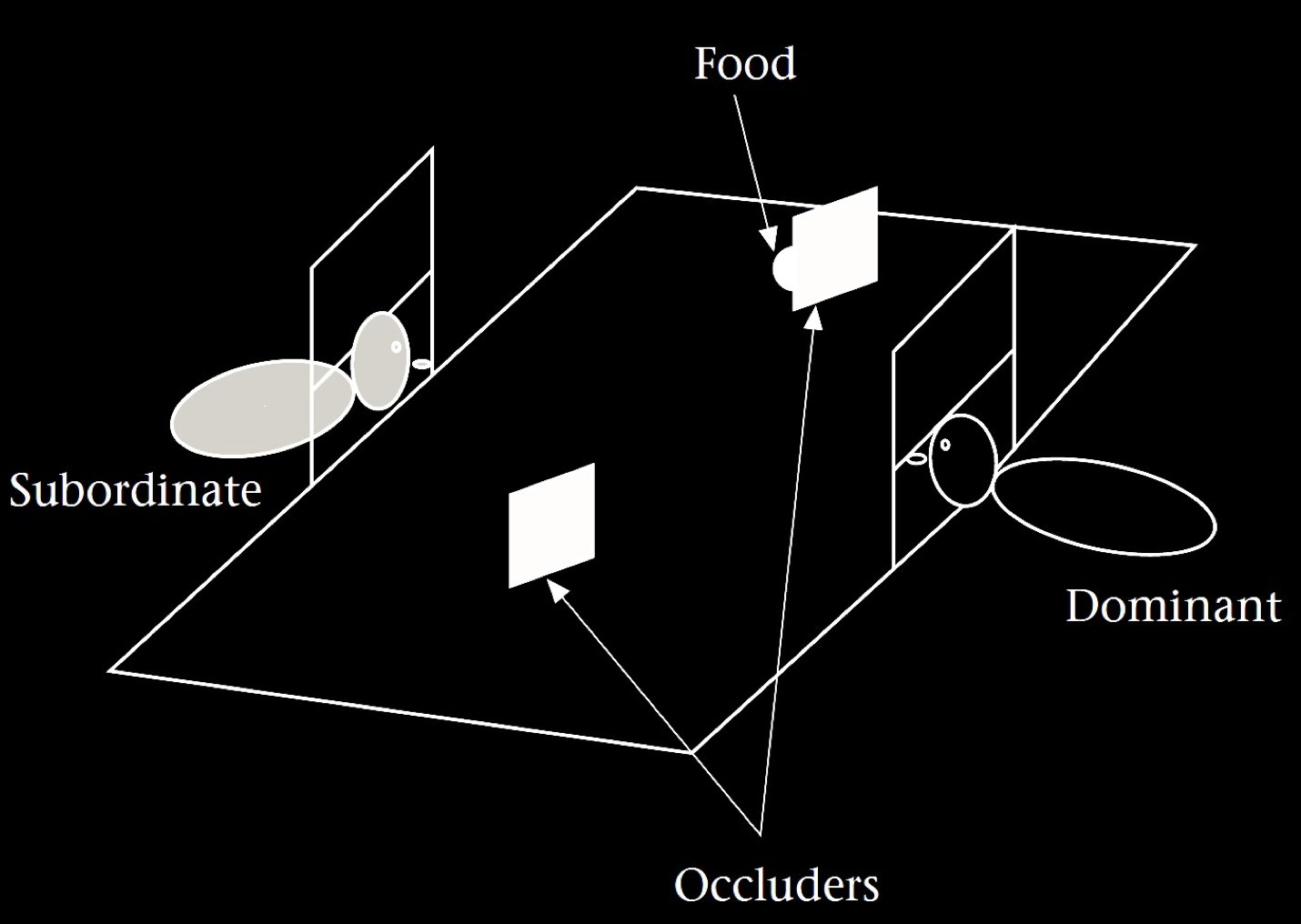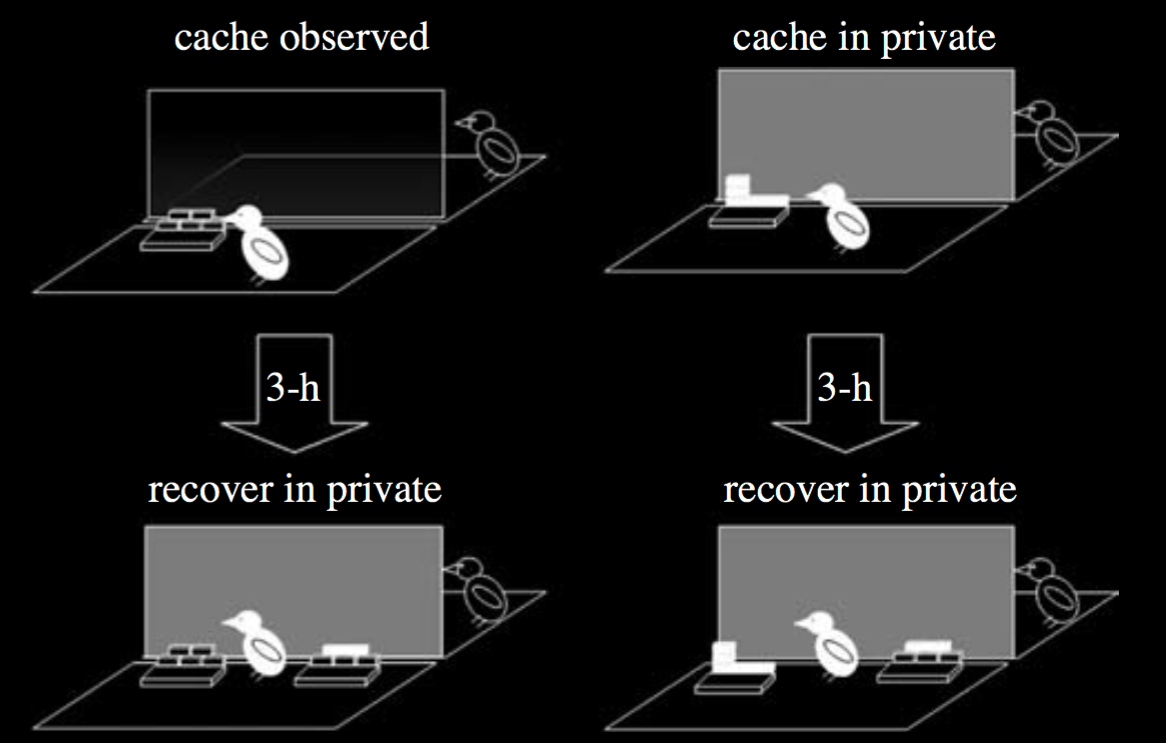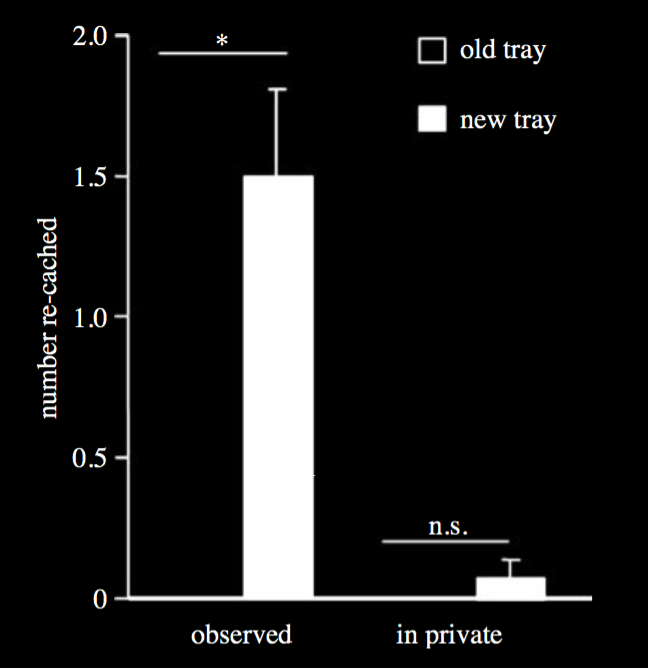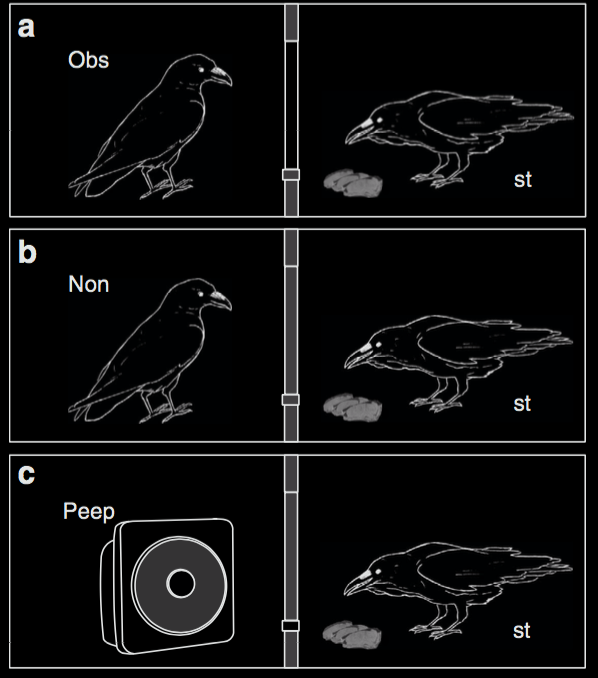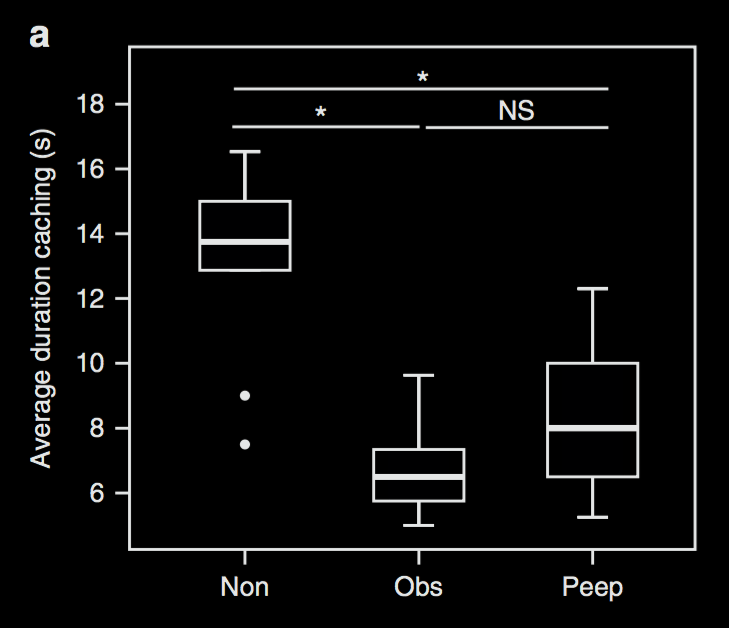Many animals including scrub jays \citep{Clayton:2007fh},
ravens \citep{bugnyar:2016_ravens},
goats \citep{kaminski:2006_goats},
dogs \citep{kaminski:2009_domestic},
ringtailed lemurs \citep{sandel:2011_evidence},
monkeys \citep{burkart:2007_understanding, hattori:2009_tufted}
and chimpanzees \citep{melis:2006_chimpanzees,karg:2015_chimpanzees} reliably vary their actions in ways that are appropriate given facts about another’s mental states.
What could underpin such abilities to track others’ mental states?
